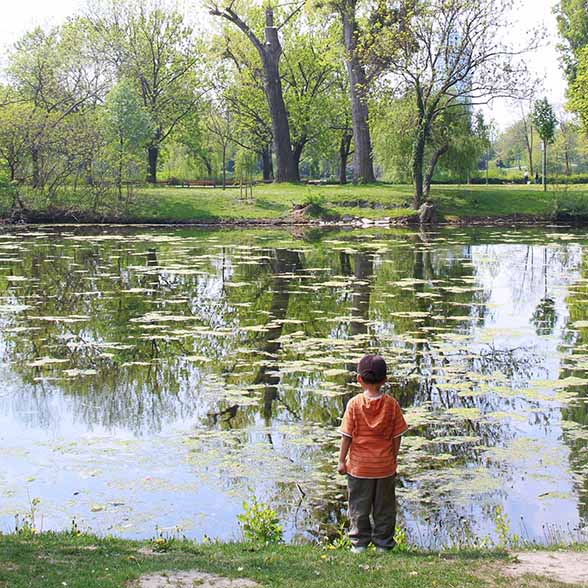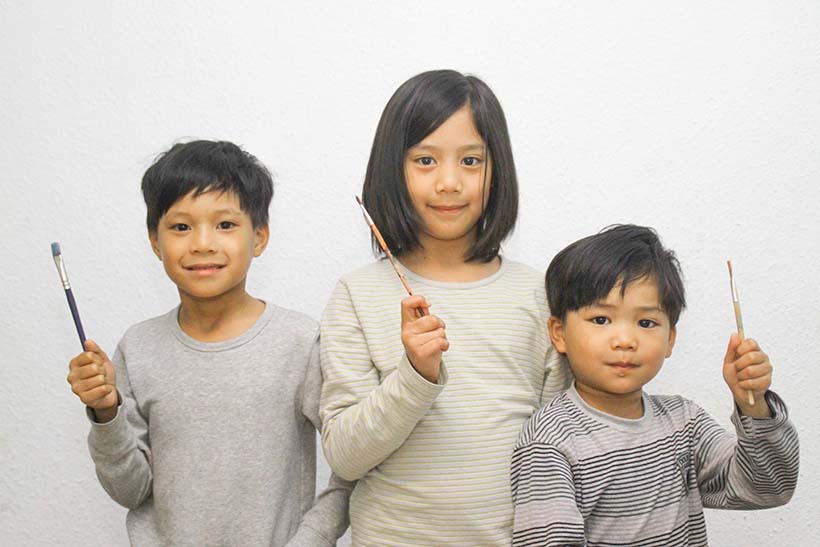
Benefits of Art For Kids – Paintbrushes
Having an artist for a dad, the kids have been exposed to colors, papers, canvasses, and paints of different kinds at home. It didn’t came as a surprise to see them combine colors neatly when we make “abstract” art at home.
Aside from the fun of mixing colors, seeing characters come to life, or simply not spilling colors outside of lines, scribbling, painting, drawing, and other related forms of art is beneficial to children. It also sets them to a path that would make their life literally colorful and full of imagination.
Here are some of the benefits of art for kids and some tips to encourage them to pursue the creative path or simply enjoy it.
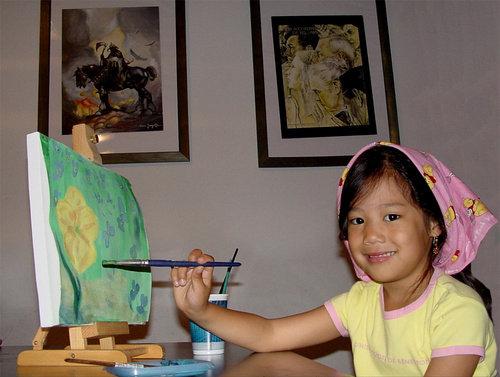
Benefits of Art For Kids – watercolor painting on mini easel
Table of Contents
Helps Develop Motor Skills
Both the bigger muscles of the arms, legs, and the smaller muscles of the hands, fingers are used when a child draws, scribble, paint murals, and even create with clay. These activities activate the brain and all that is necessary to make tiny (fine motor) and big (gross motor) movements.
Practice Hand-Eye Coordination
Even a simple coloring book will help young kids practice hand-eye coordination. Using their eyes to see if the colors fill inside the lines and using the hand to do it is a great coordination exercise.

Benefits of Art For Kids – left-handed coloring
Brain Exercise
Scientific research proves art enhances brain function, and many publications on such have been published. Drawing improves many of the cognitive functions (you know: learning, thinking, reasoning, remembering, problem solving, decision making, and attention). Art also makes one relaxed and happy. It is brought about by the lowering of the stress hormone, cortisol and a boost in the falling in love hormone, dopamine.
Have you ever heard of the Stendhal or Florence syndrome? Apparently, when persons become exposed to objects, artworks, or phenomena of great beauty and antiquity they experience a psychosomatic condition involving rapid heartbeat, fainting and confusion. It often happens in Florence until today, being a city full of Art (the birthplace of the Renaissance), that hospital personnel are already used to tourists being brought in with such symptoms. That’s how art can affect some people. Now, what if you are the one doing the art itself?
Practice Concentration
Eye-hand coordination needs concentration, to be able to color without going out of line, to finish a product or project, a child needs to focus. Going through steps of an instruction in crafting, makes them see the importance of giving full attention to not miss what needed to be done.
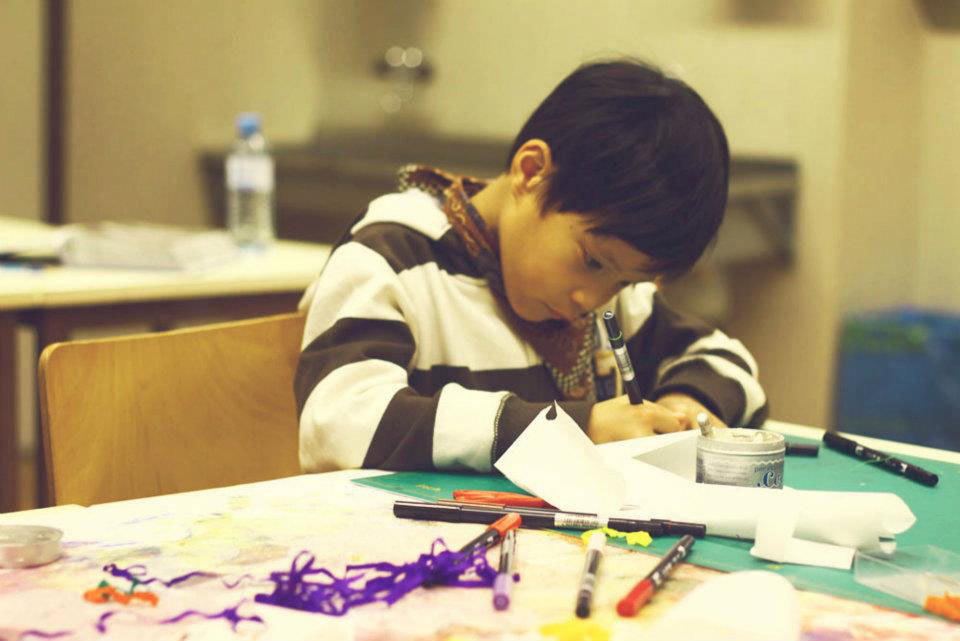
Benefits of Art For Kids – craft and draw some
Build up Self-esteem
Art being subjective gives children the freedom to express themselves. As there is no right or wrong when it comes to coloring, building products, they gain confidence in finishing an artwork.
Finding a Sense of Purpose
Kids, are all about play, at some point, they get asked the question “What do you want to be when you grow up?” Some kids may take time to think then answer, others may even say ‘I don’t know yet’, but expect kids who do creative activities to answer in the line of “an architect, an artist, a painter.”
A study found that those who engage in regular arts and crafts displays what psychologists call “flourishing”—a process that involves internal growth and purpose.
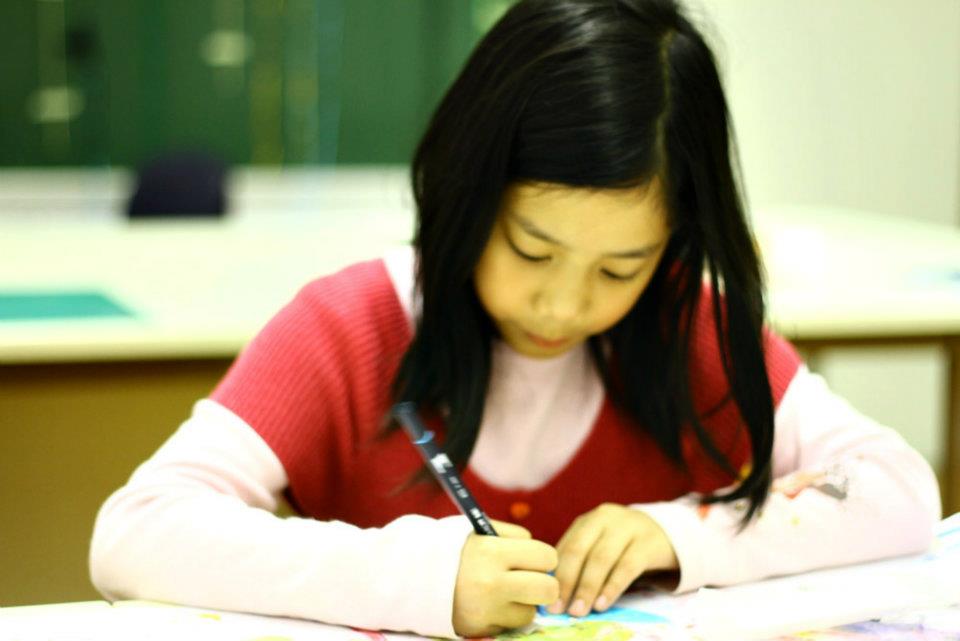
Benefits of Art For Kids – serious coloring
Express Emotions
Art provides a healthy outlet for feelings that one can’t express in words. Whether it be writing, drawing, or music, letting out feelings that are hard to articulate through these media proves helpful to children, and adults too. Art provides a safe method for children to express themselves.
Learn Colors
Learning about colors early in life is an important part of a child’s development. Identifying colors by names is both a marker and a milestone in a child’s cognitive process. It also helps them with linking visual items to words.

Benefits of Art For Kids : by our little boy (in 2010)
Visual Learning
As kids are able to identify colors, their curiosity increases. Looking at art, they would try to interpret, probably criticize (not aloud) what they see, and attempt to create a better copy if they are not satisfied with something.
They would also be willing to see how processes are done and try it themselves. Visual learning is prerequisite to reading and also enjoying picture books.

Benefits of Art For Kids : Venus De Milo (Louvre)
Develop Pre-Writing Skills
Paul Klee once said, “A line is a dot that went for a walk.” Looking at it, simple but so true. Drawings and letters begins with a dot and ends with a dot.
A dot going for a walk creates a line.
A line that can go anywhere creates a shape or a letter.
A shape combined with other shapes creates a painting.
A letter combined with other letters create a word.
Expand Imagination
Events and activities like fishing, field trips, zoo visits can inspire kids to draw what they experienced and saw. They may even recall movies when looking at a work of art.
At the Louvre, we were walking along the corridors when older son spotted Venus de Milo. He gasped and said, “ohh, that’s the statue Hercules broke because he threw a rock, now she has no hands…” ^_^ – referring to Disney’s Hercules.
He also relayed a number of stories when he was around five. Some of which I had attempted to write too. One day, I will have hubby illustrate our son’s stories, those that I have written down for him, I hope that he continues to have an imagination that spurs fun stories.
Enhance the Ability to Follow Instructions
As mentioned, concentration requires giving full attention to follow instructions carefully, not skipping a beat. This skill can prove useful later on and in other aspects, like cooking, baking, planning, and building.

Benefits of Art For Kids : busy kid
Learning How To Handle Criticism
Beauty is in the eye of the beholder, goes the cliché…and as each of us have different opinions, kids learn that what they like may be different than what others like, and that’s totally okay.
When they look at others’ creations, they will see it differently than theirs and if others give them criticism, they would learn that it’s just the other person’s point of view. This is a crucial time for them to realize what constructive criticism is, and it’s your chance to guide them.
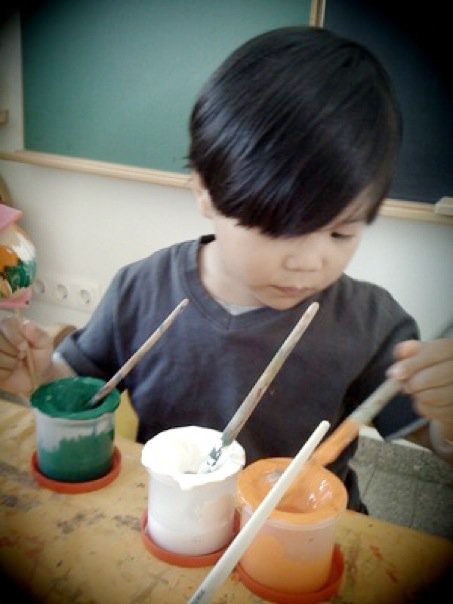
Benefits of Art For Kids : choosing paint
Refuge
Art could be a much-needed escape to many, albeit temporary. We’re talking about all forms of art: Painting, Sculpture, Literature, Architecture, Cinema, Music, and Theater.
Art as mentioned above, affects two hormones in us, thus, art reminds us that there will always be a silver lining to any bad situation.
Art, whether creating it or just observing it, makes one realize that there’s always beauty to be had.
Appreciating Art and Our Creator
Art imitates life…in a sense that what is drawn or made is a copy of objects in real life, or true events. In this regard, what children sees, in nature for example, could inspire them to draw.
As a photographer, I’ve often carried a camera with me, whether a bulky one or a phone camera, I take chunks of reality, like all these memories of the kids doing art. Drawing and painting are much complicated than photography…nonetheless, both are a copy of reality.
Mimesis, as it is called, we believe originates from the best artist there is, God our Creator. Earth is a bountiful place for color and light. Painting landscapes, portraits, still art, and even abstracts is drawing inspiration from God’s original creation.

